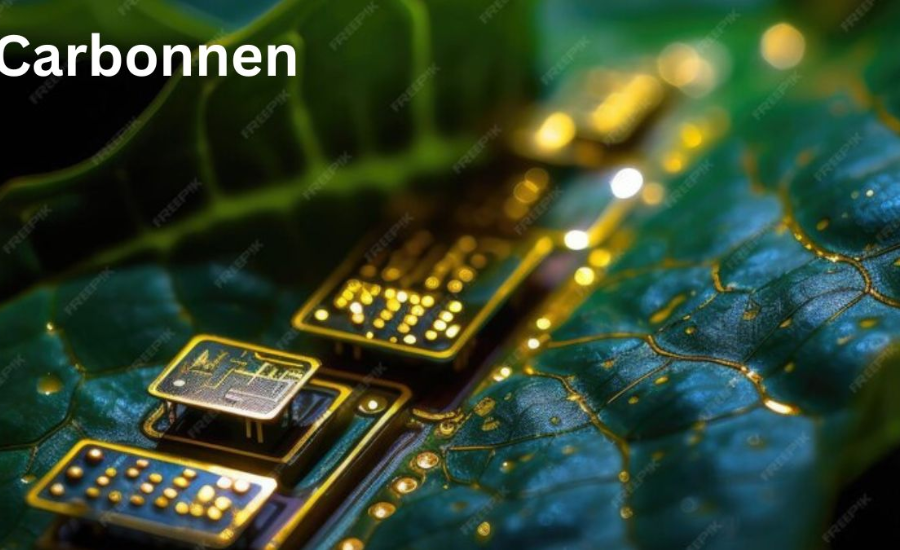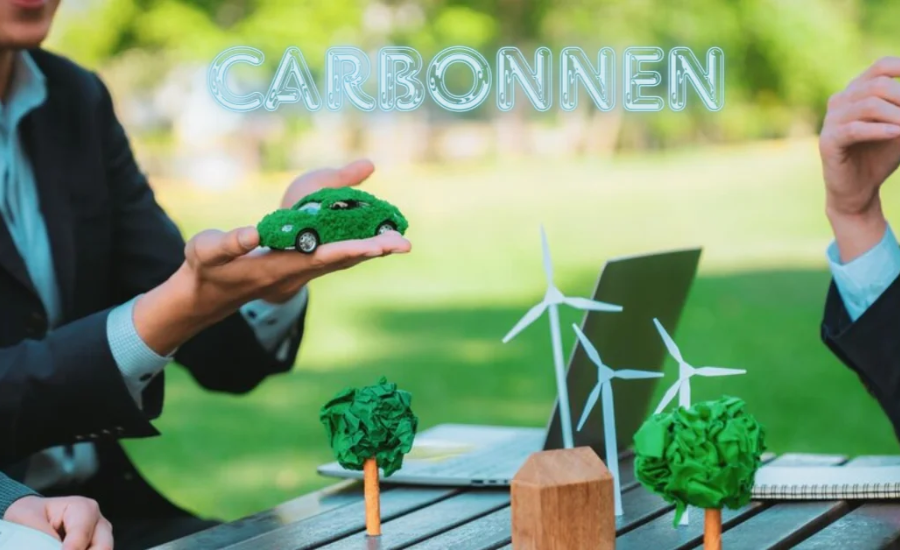In the realm of advanced materials, one substance stands out for its potential to transform industries across the board: Carbonnen. This novel carbon allotrope boasts unique properties and capabilities that promise to revolutionize technology and materials science as we know it. In this detailed guide, we will explore everything you need to know about Carbonnen, from its definition and properties to its production processes, applications, benefits, challenges, recent innovations, and prospects.
Defining Carbonnen

It is a cutting-edge carbon allotrope that has captured the attention of scientists and industry professionals alike. Unlike traditional carbon materials such as graphite and diamond, It is features a distinct lattice configuration and remarkable properties that set it apart from the rest. Its three-dimensional structure, unparalleled strength, superior electrical conductivity, and remarkable thermal stability make it a game-changer in the world of advanced materials.
Properties of Carbonnen
1. Structural Configuration: Carbonnen’s unique three-dimensional lattice structure contributes to its exceptional strength and stability, distinguishing it from other carbon forms.
2. Strength and Durability: The material exhibits unparalleled tensile strength and resilience, making it ideal for applications requiring high durability.
3. Electrical Conductivity: It demonstrates superior electrical conductivity, opening new avenues in the field of electronics and energy storage.
4. Thermal Stability: With remarkable thermal stability, Carbonnen’s can withstand extreme temperatures without degrading, enhancing its suitability for high-temperature applications.
Production Processes

1. Chemical Vapor Deposition (CVD): A popular method for producing Carbonnen involves the deposition of carbon atoms on a substrate through chemical vapor processes.
2. Arc Discharge Method: This technique uses an electric arc to vaporize carbon rods, forming Carbonnen through condensation.
3. Laser Ablation: A high-energy laser beam ablates a carbon target, leading to the formation of Carbonnen particles.
Applications of Carbonnen
1. Electronics and Semiconductors: Carbonnen’s superior electrical properties make it ideal for developing high-performance electronic components and semiconductors.
2. Aerospace Engineering: Its strength and thermal stability are crucial for aerospace applications, including lightweight, durable components for aircraft and spacecraft.
3. Energy Storage: It enhances the efficiency of batteries and supercapacitors, leading to improved energy storage solutions.
4. Medical Devices: Biocompatible and durable, Carbonnen is suitable for advanced medical implants and devices.
Benefits of Carbonnen

1. Enhanced Performance: Carbonnen’s properties lead to significant improvements in the performance and efficiency of various technologies.
2. Sustainability: As a carbon-based material, Carbonnen offers an environmentally friendly alternative to many traditional materials.
3. Innovation Potential: The unique capabilities of Carbonnen pave the way for innovative applications across multiple industries.
Challenges in Carbonnen Development
1. Production Costs: High production costs remain a significant barrier to the widespread adoption of Carbonnen.
2. Scalability: Developing scalable production methods is crucial for commercial viability.
3. Integration: Integrating Carbonnen into existing technologies and manufacturing processes poses technical challenges.
Recent Innovations in Carbonnen
1. Enhanced Production Techniques: Recent advancements in production methods have improved the quality and yield of Carbonnen.
2. New Applications: Ongoing research is uncovering novel applications, from flexible electronics to advanced composite materials.
User Guides and Tutorials
Harnessing the power of Carbonnen requires a comprehensive understanding of its handling and safety procedures. Proper guidelines for handling, storage, and maintenance are essential to ensure that users can work safely with this advanced material. These protocols are designed to maximize Carbonnen’s utility while minimizing risks associated with its use. Additionally, troubleshooting tips for common issues provide practical solutions to overcome challenges, ensuring continuous productivity and efficiency in various applications.
Handling Guidelines:
To safely handle Carbonnen, users should wear appropriate personal protective equipment (PPE) such as gloves, goggles, and lab coats. It is crucial to work in well-ventilated areas or under fume hoods to avoid inhalation of any particles. Proper training on material handling techniques can prevent accidents and ensure safe usage.
Storage Recommendations:
Its should be stored in a cool, dry place away from direct sunlight and moisture. Using airtight containers can prevent contamination and degradation. Labeling storage containers with the material’s name and safety information helps maintain an organized and safe storage environment.
Maintenance Protocols:
Regular maintenance checks and cleaning procedures are vital to keeping equipment and workspaces free fromIts residues. Using appropriate cleaning agents and tools designed for advanced materials can prevent damage and prolong the lifespan of both the material and the equipment used.
Safety Procedures:
Implementing strict safety protocols, including emergency response plans, can mitigate the risks associated with Carbonnen. Regular training sessions and safety drills ensure that all personnel are prepared to handle any incidents effectively.
Troubleshooting Tips:
When working with Carbonnen, encountering issues is inevitable. Common problems may include material contamination, equipment malfunctions, or unexpected reactions. Having a set of troubleshooting tips can help users quickly identify and resolve these issues. For instance, if contamination occurs, users can follow specific cleaning protocols to restore the material’s purity. For equipment malfunctions, consulting the manufacturer’s guidelines or seeking expert assistance can ensure swift repairs.
By following these comprehensive user guides and tutorials, users can fully leverage the potential of Carbonnen, enhancing their productivity and ensuring a safe working environment.
Future Prospects

The future of Carbonnen looks promising, with ongoing research and development aimed at overcoming current challenges and unlocking its full potential. As production methods become more efficient and cost-effective, Carbonnen is poised to revolutionize industries ranging from electronics and aerospace to energy and healthcare.
FAQs About Carbonnen
1. What is Carbonnen?
It is a novel carbon allotrope with a unique three-dimensional lattice structure, offering unparalleled strength, superior electrical conductivity, and remarkable thermal stability. It has the potential to revolutionize various industries due to its exceptional properties.
2. How is Carbonnen different from other carbon allotropes like graphite and diamond?
Unlike traditional carbon materials, It features a distinct lattice configuration that provides unique properties such as exceptional strength, superior electrical conductivity, and remarkable thermal stability. These characteristics set it apart from graphite and diamond.
3. What are the primary methods used to produce Carbonnen?
The primary production methods for Carbonnen include Chemical Vapor Deposition (CVD), Arc Discharge Method, and Laser Ablation. Each technique has its advantages and applications, depending on the desired quality and yield of It.
4. What are the main applications of Carbonnen?
It has a wide range of applications, including electronics and semiconductors, aerospace engineering, energy storage, and medical devices. Its unique properties make it suitable for high-performance, durable, and efficient components in these fields.
5. What are the benefits of using Carbonnen?
The benefits of Carbonnen include enhanced performance of various technologies, sustainability as an environmentally friendly alternative, and significant innovation potential across multiple industries due to its unique capabilities.
6. What challenges are associated with the development of Carbonnen?
Key challenges include high production costs, scalability of production methods, and technical difficulties in integrating Carbonnen into existing technologies and manufacturing processes.
Conclusion
It represents a breakthrough in the field of advanced materials, offering unique properties that can transform industries ranging from electronics and aerospace to energy and healthcare. Its unparalleled strength, superior electrical conductivity, and remarkable thermal stability make it a game-changer in materials science. While challenges such as production costs and scalability remain, ongoing research and development are steadily overcoming these obstacles. As the potential of Carbonnen continues to unfold, it is poised to revolutionize technology and drive innovation across numerous sectors. By understanding its properties, applications, and handling protocols, users can fully leverage the benefits of this cutting-edge material, ensuring a safer and more productive future.
Stay in touch for more updates and alerts: Vents Tribune!

